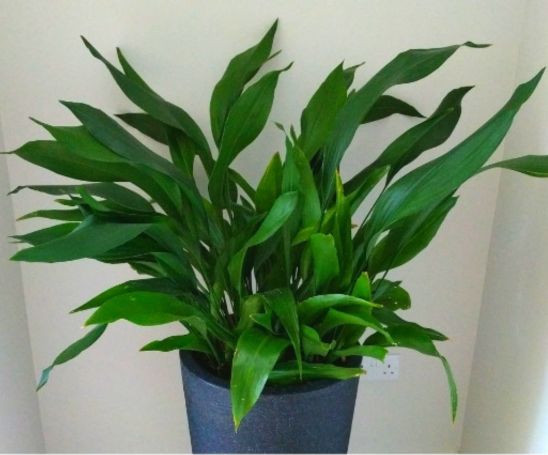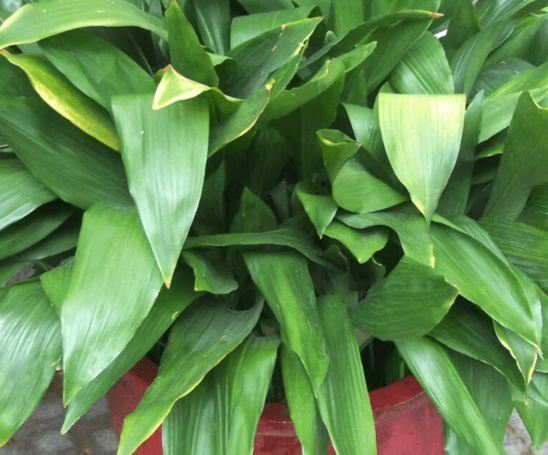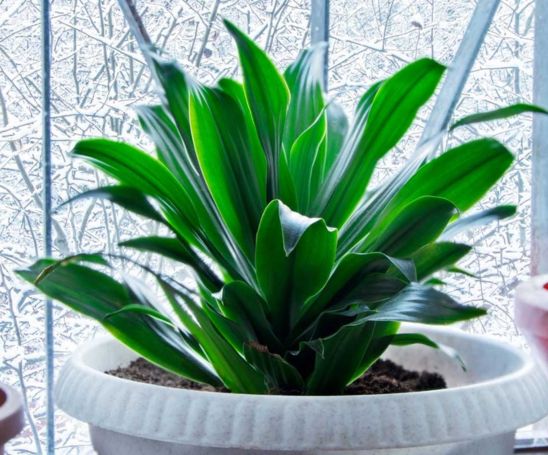Care for cast iron plants is often considered an easy task, but to thrive, this hardy green beauty requires more than neglect. While it can survive in low light conditions and tolerate irregular watering, providing optimal care will reward you with lush, vibrant foliage that adds elegance to any space.
Another crucial aspect of caring for a cast iron plant is maintaining a consistent environment. This resilient plant doesn’t appreciate sudden temperature fluctuations or drafts, so finding a stable location within your home will promote steady growth and health. You can elevate your cast iron plant from surviving to thrive in any indoor setting.
What Is A Cast Iron Plant?

Cast iron plants, scientifically known as (Aspidistra elatior) are native to the forests of Japan and Taiwan. The glossy green leaves have long, tapering edges, sometimes with stripes and spots. These evergreen plants are a popular choice for indoor and outdoor gardens alike, thanks to their ability to thrive in a wide range of conditions. With their glossy, dark green leaves that grow in an upright manner, they add a touch of elegance to any space.
| Common Name | Cast-iron plant, bar room plant |
| Botanical Name | Aspidistra elatior |
| Family | Asparagaceae |
| Plant Type | Perennial, herbaceous |
| Mature Size | 2–3 ft. tall, 1–2 ft. wide |
| Sun Exposure | Partial, shade |
| Soil Type | Well-drained |
| Flower Color | White, purple |
Where To Plant Cast Iron Plants?

Cast iron plants thrive in locations with indirect or filtered light, both indoors and outdoors. They prefer to be kept away from direct sunlight, as too much sun exposure can cause their leaves to scorch and dry out. So, it is best to avoid placing them in west-facing windows where they will receive intense sun exposure.
Temperature, cast iron plants prefer moderate temperatures ranging from 60°F and 75°F (15°C to 24°C). They can tolerate a range of temperatures but should be protected from extreme cold or heat. Avoid placing them near drafts or in areas with sudden temperature fluctuations.
When planting cast iron plants outdoors, choose a shaded or shaded location in your garden or landscaping. They are excellent choices for planting under tree canopies or in areas with dense shade where other plants might struggle to grow.
For indoor planting, select a spot with indirect or filtered light. You can place them in areas such as north-facing windows or away from direct sources of sunlight. They can also do well in interior spaces with artificial lighting, making them suitable for offices or rooms with limited natural light.
Features Of Cast Iron Plant
- The glossy, dark green leaves of the cast iron plant have a leathery texture, giving them a resilient appearance.
- The leaves of the cast iron plant grow in an upright manner, creating an attractive clumping effect.
- Cast iron plants are not fast growers, making them a suitable choice for those who prefer low-maintenance plants that won’t outgrow their space.
Types of Cast-Iron Plants

There are several varieties of cast-iron plants, Each type has its own distinct characteristics and can add a touch of elegance and beauty to any space. Let’s take a closer look at some of the popular types of cast iron plants:
- ‘Asahi’: The Asahi cast iron plant is a stunning variety known for its glossy, dark green leaves. It thrives in low light conditions and can tolerate a wide range of temperatures. The Asahi is perfect for adding a touch of greenery to small indoor spaces because of its compact growth habit.
- ‘Hoshi-zora’: With its unique variegated foliage featuring deep green leaves adorned with splashes of white, this variety adds a touch of color and visual interest to any room. The Hoshi-Zora prefers bright, indirect light and thrives with consistent moisture.
- ‘Singapore Sling’: The Singapore Sling is another popular variety of cast iron plant that offers a tropical touch to your home or office space. Its large, broad leaves have a distinctive pattern of stripes in various shades of green. This variety thrives in medium to bright light conditions and prefers consistent moisture levels.
- ‘Akebono’: The Akebono cast iron plant is a unique variety that stands out with its extraordinary marbled foliage. Its leaves feature a stunning combination of green and white patterns, resembling a beautiful work of art.
- ‘Snow Cap’: The Snow Cap cast iron plant is aptly named for its striking white variegation on its deep green leaves. This variety adds a touch of contrast and brightness to any environment.
How To Care For Cast Iron Plants Outdoors

The cast iron plant, known for its resilience and ability to thrive in low light conditions, can be a wonderful addition to your outdoor garden. With its elegant, dark green foliage and striking leaves, this plant can enhance the aesthetics of any outdoor space. To ensure that your cast iron plant flourishes in its outdoor environment, proper care is essential.
How Much Sunlight Does A Cast Iron Plant Need?
The cast iron plant is well-suited to environments with limited sunlight. While it can tolerate low light conditions, it thrives when provided with indirect or filtered light. Placing your cast iron plant in a location that receives bright, indirect light for a few hours a day is ideal. Direct sunlight can scorch the plant’s leaves and impair its growth.
What Is The Best Soil For A Cast Iron Plant?
The cast iron plant prefers a well-draining soil mix that retains moisture without becoming waterlogged. A recommended soil mix consists of equal parts peat moss, perlite, and garden soil. It provides ideal growth conditions for roots and helps prevent root rot.
How Often To Water Cast Iron Plant?
The plant prefers moist soil, so aim to water it when the top inch of soil feels dry to the touch. During the hotter months, you may need to water more to prevent the soil from drying out completely. However, be cautious not to overwater, as this can lead to root rot.
What Fertilizer Is Best For Cast Iron Plants?
To promote healthy growth and vibrant foliage, fertilizing your cast iron plant is essential. The best fertilizer to use is one that is well-balanced with an equal ratio of nitrogen (N), phosphorus (P), and potassium (K). Fertilizer should be applied between spring and fall, during the plant’s active growing season.
Temperature And Humidity
Cast iron plants grow best at temperatures between 60°F and 75°F (15°C to 24°C), but they can also tolerate cooler temperatures. Temperature fluctuations and drafts should be avoided when taking care of the plant. As for humidity, the plant can adapt to various levels, but it prefers moderate to high humidity. To increase humidity, you can group your cast iron plants together or place a tray filled with water near them.
How To Prune Cast Iron Plants
Pruning is not usually required for cast iron plants, but you may need to remove any dead or damaged leaves to maintain its aesthetic appeal. Use sharp, clean pruning shears and make cuts at the base of the leaf stem. Taking this simple step will keep your cast iron plant looking tidy and healthy.
How To Propagate Cast Iron Plant

To propagate a cast iron plant, the most common method is through division. Here are the steps to propagate a cast iron plant:
- Start by choosing a healthy, well-established cast iron plant with many stems.
- Remove the plant from its container or dig up the plant from the ground.
- Shake off excess soil from the roots to expose the rhizome.
- Identify natural divisions or sections where the stems emerge from the main rhizome.
- Using a sharp, clean knife or garden shears, cut through the rhizome to separate the plant into smaller sections. Make sure each section has a healthy stem and a part of the rhizome.
- Plant each divided section in a separate container or the desired location in the garden.
- Provide the divided plants with the same care as the parent plant, including well-draining soil and indirect sunlight.
- Water the divided plants and keep the soil moist until they establish their roots.
By following these steps, you can propagate your cast iron plant and expand your collection or share it with others.
How And When To Repot The Cast Iron Plant
As the cast iron plant grows, it may need repotting to provide ample space for its roots. Repot the plant every 2 to 3 years, in spring. When repotting, choose a pot that is one size larger and has good drainage. Remove the plant from its current pot, shake off excess soil, and place it in the new pot. Fill in with fresh soil mix, ensuring the rhizomes are covered but not buried too. Water and resume normal care routine.
Common Pests And Plant Diseases For Cast Iron Plant

The Cast Iron Plant (Aspidistra elatior) is a hardy plant that can withstand a variety of conditions, But like any other houseplant, it can fall victim to a few common pests and diseases.
pests
Scale Insects: Scale insects are small, brown insects that cover the leaves of the Cast Iron Plant. They reproduce and establish and can be detected due to their distinctive appearance. The best management for scale insects is to remove any leaves that have scale. A product containing imidacloprid can also be used to help clear up the infestation.
Spider Mites: Spider mites can also affect Cast Iron Plants. They can be detected by checking the underside of the leaves for any webbing. If you shake a leaf over a sheet of paper and see specks fall, your plant has spider mites. To treat spider mites, follow a specific treatment plan that includes removing the infested leaves and applying an appropriate insecticide.
Mealybugs: Mealybugs are another common pest for Cast Iron Plants. They appear as odd little white spots on the leaves. To treat mealybugs:
- Dip cotton balls and swabs in alcohol and remove all visible mealybugs.
- Mix 1 cup of rubbing alcohol with a few drops of Dawn dish soap and 1 quart (32oz) of water.
- Spray the whole plant, not only where mealybugs are visible.
- Repeat the treatment once or twice a week until the issue is gone.
Aphids: Aphids can be a problem for Cast Iron Plants, although they are not as common as the other pests mentioned. If aphids are present, they can be treated with a variety of insecticides or natural remedies, such as a strong spray of water or a solution of water and mild dish soap.
Diseases
Common diseases that affect the Cast Iron Plant (Aspidistra elatior) include root rot, leaf-spot disease, botrytis, rust, Fusarium wilt, Rhizoctonia, and powdery mildew.
- Root Rot: Root rot is caused by fungi that thrive in wet soil conditions. Avoid over watering the plant and pot it in well-draining soil to prevent root rot. If root rot is suspected, remove the affected roots and repot the plant in fresh soil.
- Leaf-Spot Disease: Leaf-spot disease is characterized by brown or black spots on the leaves. To treat this issue, remove the affected leaves and apply a fungicide to the plant. Prevent leaf-spot disease by maintaining good air circulation around the plant and avoiding overhead watering.
- Botrytis: Gray mold, or botrytis, is a fungal disease that causes fuzzy gray mold to grow on leaves.
Common Problems With Cast-iron Plants

While cast-iron plants are known for their resilience and ability to withstand neglect, they can still experience a few common problems. It is important to keep an eye out for these issues to ensure your cast-iron plant stays healthy and green.
Browning Tips
Browning tips on the leaves of cast iron plants can be caused by various factors, including low humidity, underwatering, or excessive fertilizer. To address this issue, increase humidity around the plant by misting the leaves or placing a humidifier nearby. Ensure that the plant is getting enough water by checking the moisture level in the soil and adjusting your watering schedule if necessary. Avoid over fertilizing, as excessive fertilizer salts can cause leaf burn.
Leaves Turning Brown
If the entire leaves of your cast iron plant are turning brown, it could be due to overwatering or exposure to cold drafts. Check the moisture level in the soil and adjust your watering habits. Cast iron plants prefer dry conditions between waterings.
Drooping Leaves
Drooping or wilting leaves can say both overwatering and underwatering. To determine the cause, check the moisture level of the soil. If it is wet, you may be overwatering the plant. Allow the soil to dry out before watering again. If the soil is dry when you check, it means the plant needs water. Please give it a thorough watering, ensuring that excess water drains away.
Benefits Of Growing Cast Iron Plants
There are plenty of reasons why growing cast iron plants can be a rewarding experience. Here are a few key benefits:
Low maintenance
Cast iron plants are known for their ability to tolerate neglect and thrive in low-light conditions. They need minimal watering and can withstand a wide range of temperatures.
Improved air quality
Like many other houseplants, cast iron plants contribute to purifying the air by filtering out toxins and releasing oxygen. This makes them an excellent choice for improving indoor air quality.
Versatility
Whether you’re looking for a houseplant to liven up a dark corner or a hardy plant for your garden, cast iron plants can fulfill both roles with their adaptability to indoor and outdoor conditions.
Are Cast Iron Plant Toxic For Pets & Kids?
Cast iron plants are generally considered non-toxic to pets and kids. It is important to note that while cast iron plants are not toxic, ingesting parts of the plant may still cause mild gastrointestinal issues such as vomiting or diarrhea in pets like cats and dogs. Children and pets should always be checked around plants and discouraged from chewing on or ingesting them.
Individual sensitivities and allergies may vary; therefore, if you have specific concerns or suspect adverse reactions, speaking to a veterinarian or healthcare professional is recommended.
Frequently Asked Questions On Care For Cast Iron Plant
How Do I Care For A Cast Iron Plant?
To care for a cast iron plant, place it in indirect light, water it but avoid overwatering, and maintain a consistent temperature between 50-85°F. Fertilize it every few months with a balanced houseplant fertilizer. Trim any yellow or damaged leaves and repot every 2-3 years to keep them healthy.
Can A Cast Iron Plant Tolerate Low Light?
Yes, cast iron plants are known for being able to tolerate low-light conditions. They thrive in shade and can survive in areas where other plants may struggle. This makes them a great choice for those with limited natural light in their homes or offices.
How Big Do Cast Iron Plants Grow?
Cast iron plants are known for their ability to grow in less-than-ideal conditions, making them a suitable choice for indoor spaces. When it comes to size, these plants can reach an average height of 2 to 3 feet, with a spread of about 2 feet.
Can Cast Iron Plants Take Morning Sun?
Cast iron plants prefer low light conditions, so direct sunlight is not their best friend. While they can tolerate some morning sunlight, it’s important to avoid exposing them to intense, direct sunlight for extended periods. If you plan to place your cast iron plant near a window, opt for a north or east-facing window where it can receive gentle, indirect sunlight in the morning.
How Often Should I Water A Cast Iron Plant?
A cast iron plant should be watered, but be mindful not to overwater. Water the plant when the top inch of the soil becomes dry, and make sure the water drains well. Avoid letting the plant sit in standing water, as this can lead to root rot.
Conclusion
Proper care is essential for the healthy growth of the Cast Iron Plant. By following these simple guidelines, you can ensure that your plant thrives and remains resilient. It is important to keep your plants dust-free, water them, and provide the proper amount of light.
Avoid common pitfalls like overwatering or direct sunlight when growing plants. With a little attention and care, your Cast Iron Plant will continue to add beauty to your indoor or outdoor space.
You may also like Variegated Philodendron Micans







